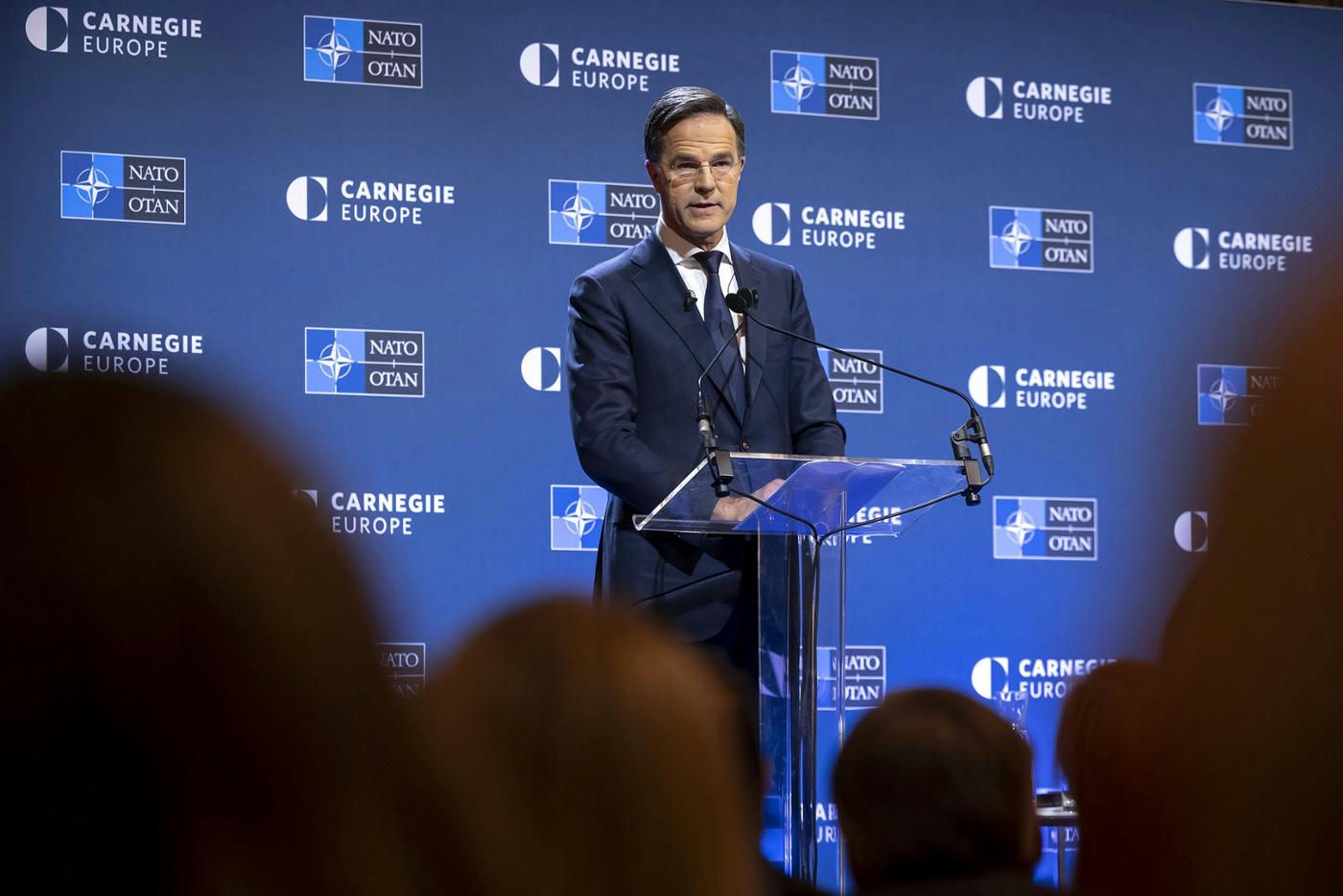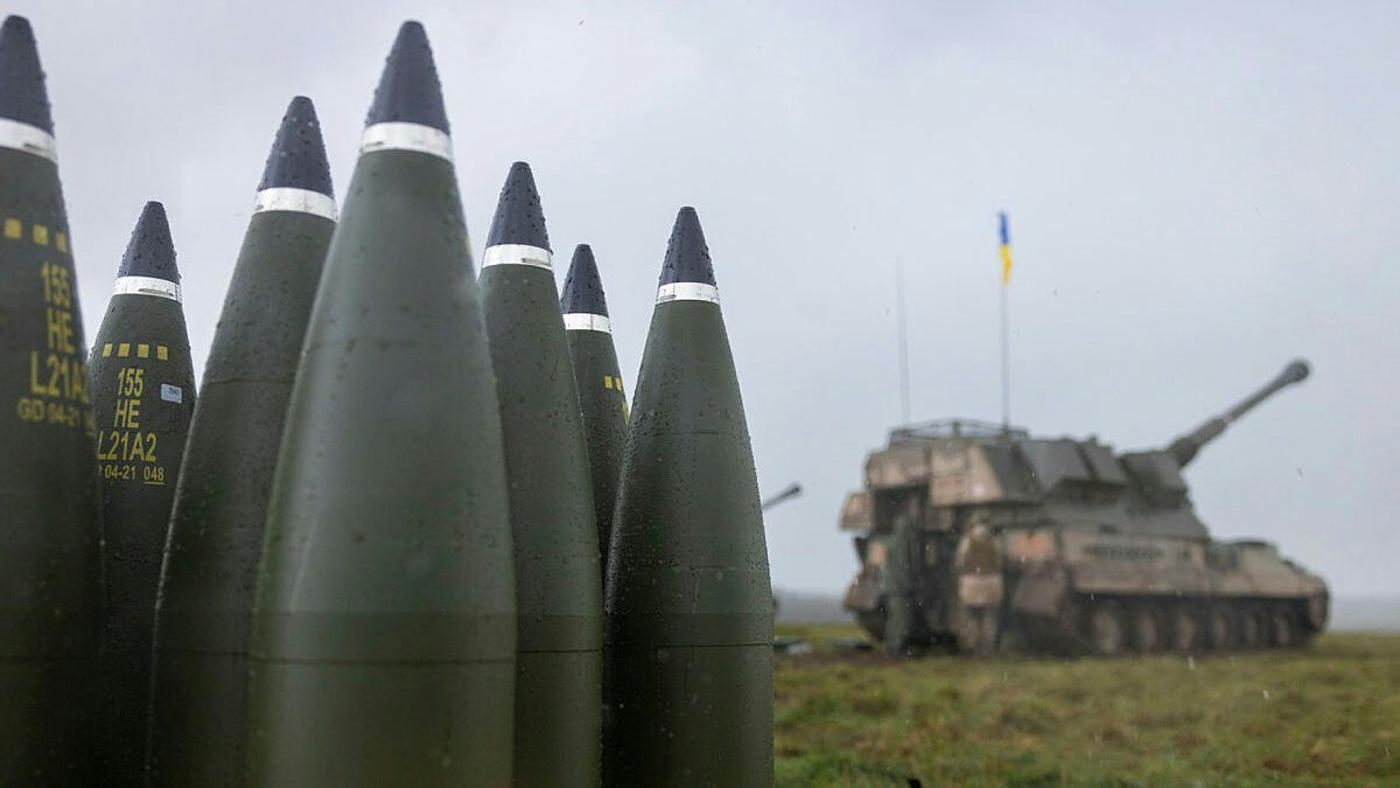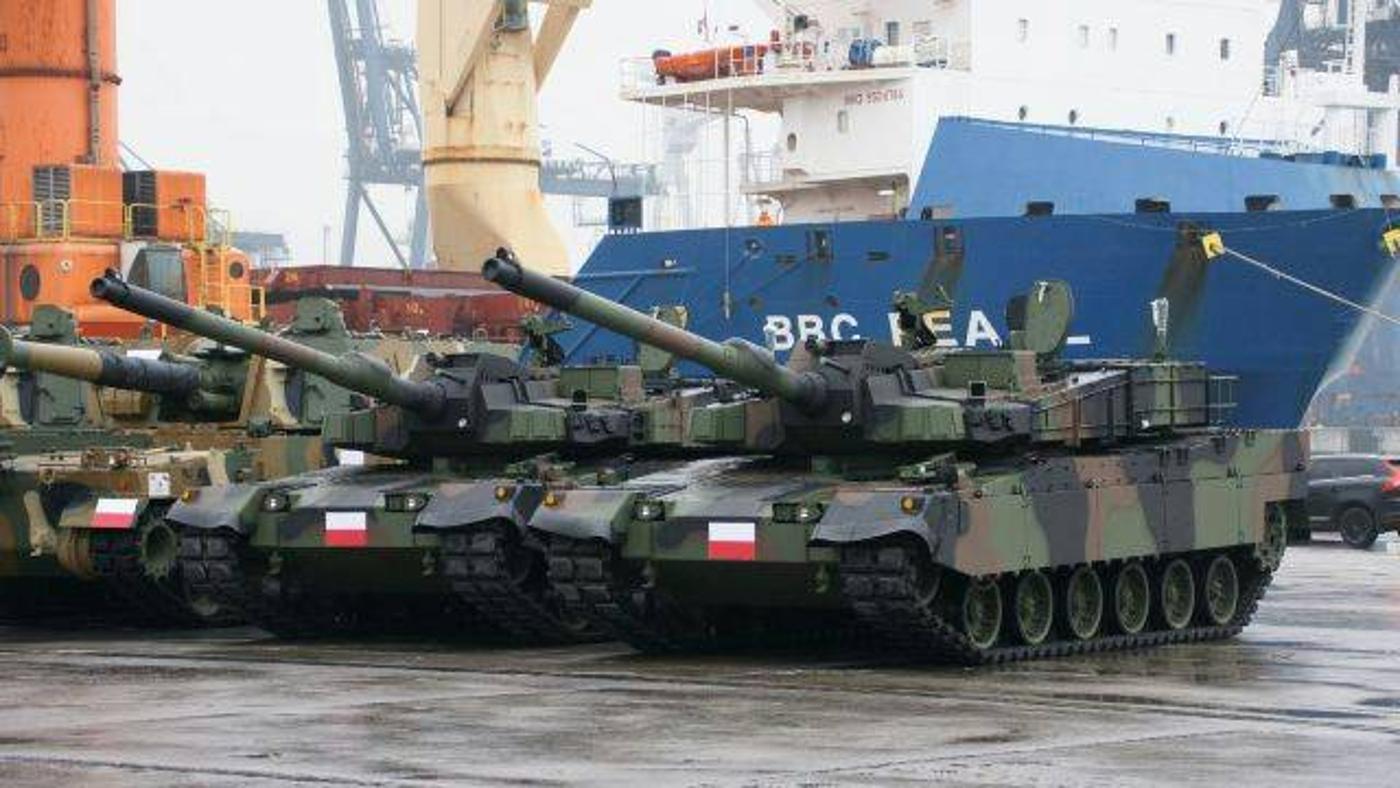The defence posture of NATO member countries, which had already dramatically shifted after 2014, was accelerated irreversibly in 2022 with Russia’s full-scale invasion of Ukraine. The trend of boosting defence spending has been witnessed across the Alliance, however, it has been especially strong in the countries closer to NATO’s eastern flank, as Europe has recognised its obligation to share more fairly the financial burden of defending itself.
Within this new paradigm, Poland and Germany represent two examples of European countries who are stepping up to this challenge by securing significant defence funding in different yet equally effective ways.
Why are Europe and NATO rearming?
Following Russia’s illegal and unprovoked invasion of Ukraine, the European members of NATO have experienced a renaissance when it comes to boosting defence spending. This phenomenon has further accelerated in the first months of 2025, underscoring that the European continent stands ready to take greater care of its own security, providing some relief to the US, which has traditionally been the Alliance’s top financial contributor.
This trend is not just about words, but is observable empirically. Never before have more countries spent at least 2% of their Gross Domestic Product (GDP) on defence. Today, 23 NATO Allies – more than two-thirds - have reached the spending goal set up in 2014, with some exceeding it by over 1%. As NATO Secretary General Mark Rutte stated recently, the changed security environment will require this level of investment to go further still, but with this upward momentum, that ambition sounds less like a farfetched proposal and more like a realistic objective.

In his first major speech as NATO Secretary General, Mr Mark Rutte highlighted the critical need to ramp up defence spending and defence production in an increasingly turbulent security environment. Speaking at an event hosted by Carnegie Europe in Brussels on 12 December 2024, he called on Allies to “shift to a wartime mindset and turbo charge our defence production and defence spending.”
© NATO
The increase in defence spending within NATO did not, however, begin in 2024, or even in 2022. It began over a decade ago in 2014, when Russia illegally and brutally annexed the sovereign Ukrainian territory of Crimea, as well as parts of the regions of Donetsk and Luhansk. At that time, the number of Allies meeting NATO’s 2% guideline (which was formally agreed at NATO’s Wales Summit the same year) was just three. The reversal of years of declining defence expenditure in Europe came about as a necessary response to Russia’s aggressive and bellicose rhetoric, and scant disregard for the rules-based international order.
Despite heavy losses and minimal tactical gain, Russia is so far continuing its war of aggression against Ukraine and showing limited interest in ending the war or negotiating a just and lasting peace. Moscow is spending 7 to 8% of its GDP on military expenditure; a third of Russia’s state budget and the highest level since the Cold War. At the same time, NATO countries are facing the continued threat of hybrid attacks, that is, aggressive acts from hostile actors (such as Russia, but far from exclusively) that fall just below the threshold of kinetic warfare. These include the sabotage of critical infrastructure, cyberattacks, political and economic espionage, assassination attempts, propaganda campaigns and other information threats, and the weaponisation of migration flows. Every European – whether consciously or not – has been a victim of such hostile acts, and in the absence of diplomatic means of response, European governments recognise that increased defence spending and greater cooperation in NATO are essential in order to keep Europe safe.
Poland
Following the full-scale Russian invasion of Ukraine and its continued aggression, Poland has quickly established itself as a burden-sharing champion within NATO, pledging significant resources and capabilities to help strengthen the Alliance. Warsaw has increased its defence spending from 2.7% of GDP in 2022 to 4.2% in 2024, and this is projected to rise to 4.7% in 2025. In this way, Poland is providing a strong example to other European countries when it comes to honouring the NATO commitment to defence expenditure. It should be noted, however, that the road to securing greater defence spending is different for each country. It is heavily affected by the current political and economic situation, demographics, the role of military in the domestic context, as well as other cultural factors. In the case of Poland, the support for greater defence spending was a unanimous, apolitical effort, agreed on by a comfortable majority of 76.6% of Poles (as of April 2022). Russian aggression has led to a palpable fear amongst the Polish population that a full-scale conflict could potentially spill over into their country. What is equally interesting is that support for strengthening the army has not diminished with time, as the war in Ukraine continues, but has instead remained high, reaching 72.9 % in November 2024. Even after the change of power following the Polish general elections in 2023, defence spending was maintained (and even raised) and existing defence contracts were honoured. As a result of its history and its understanding of contemporary threats, Poland’s population has shown one of the highest support rates for NATO membership across all 32 Allies. Although Poland may not be NATO’s top spender in pure financial terms, of all NATO Allies, it spends the highest percentage of its GDP on defence expenditure.
Such a steep increase in funding has allowed Poland to embark on the most ambitious military modernisation programme since the fall of the Iron Curtain. In order to cope with the financial requirements of these plans, a dedicated extra-budgetary mechanism was introduced to supplement Warsaw’s annual budget. Out of 4.7% of GDP dedicated for defence, only 3% actually comes from the Ministry of National Defence’s pool. The remaining 1.7% comes from the extra-budgetary Armed Forces Support Fund. The fund is managed by the state-owned National Development Bank, with the main source of funds coming from issuing bonds. This kind of financing mechanism has some drawbacks, such as the lack of direct parliamentary oversight and potential difficulty selling the bonds. However, it has so far proven to be an effective tool for quicky increasing the defence budget by, among other things, simplifying loan-taking from foreign investment banks.
Thanks to these funds, in 2024 alone, the Polish Ministry of National Defence was able to sign over 130 contracts worth a total of EUR 35.2 billion. When looking at the extensive list of systems purchased in the last three years, a pattern becomes visible: a clever, three-pronged approach to quickly increase capabilities, but also provide resilience for years to come. The first prong constitutes ‘emergency acquisitions’. These were purchases made in order to quickly replace systems that were supplied to Ukraine, thus leaving a gap in Poland’s arsenal. For these, quick delivery times were of utmost importance, with technology transfer or price considered secondary criteria. For example, large donations of Soviet-made tanks (T-72, PT-91) were offset by K2 Black Panthers and refurbished M1A1 Abrams tanks. Similarly, to fill the gaps left by the transfer of MiG-29 fighters and AHS Krab 155 mm howitzers, Korean FA-50 aircraft and K9 Thunder howitzers were purchased.
A second prong was ‘technology enablers’, or large acquisitions that, as their integral part, included significant technology transfer. The aim of acquiring manufacturing and maintenance technology for the Polish defence industry was to allow for new capabilities to be established in-house, thus allowing for repairs, modifications and even limited modernisations to be done in Poland, rather than having to send a system back to its country of origin. In the case of some contracts, the acquisition of these innovating technologies went as far as to ensure that the production of critical components was relocated to companies within Polish territory. These contracts, although expensive, were envisioned to yield long-term benefits such as the strategic autonomy of the state-owned defence sector, much of which is consolidated around the Polish Armament Group.
The third prong focused entirely on the domestic defence industry – both state and privately owned. The Polish Government has made a pledge to spend 50% of funds for technical modernisation to exclusively buy Polish-made equipment. This approach promotes supply chain resilience but more importantly, provides much needed funds for research and development – an area which had previously been significantly underfunded.
Germany
Germany is another country whose defence posture has radically altered following the onset of the full-scale war in Ukraine. Almost immediately after Russia’s brutal invasion began, the government in Berlin took a historic strategic decision to rapidly rearm the Bundeswehr, making it more agile and well-suited for modern combat. This took place despite the budgetary, political, and cultural hurdles unique to Germany, which had previously restricted defence expenditure. As in Poland, the increase in spending was backed by broad popular support (61% in mid-2023), but the process was ultimately neither quick nor easy. To make it possible, several smaller steps were taken over the span of three years. The first step happened as early as June 2022, when a dedicated one-off fund amounting to EUR 100 billion was created. Its aim was to replace Germany’s most obsolete military equipment and to cover the most urgent needs that had been identified by the German General Staff. The funds also went towards compensating the Bundeswehr for its extensive support to Kyiv in the form of supplying weapons and equipment. Many of the systems provided by Berlin are still critical to Ukraine’s efforts and include, amongst others, Patriot and IRIS-T air defence systems as well as Leopard tanks. Berlin estimates that in 2024 alone, military assistance for Ukraine amounted to EUR 7.1 billion.
Since then, Germany has procured a number of new systems, many consistent with the lessons drawn from the conflict in Ukraine. In 2022, the Luftwaffe confirmed an order for F-35A fighters and CH-47F Chinook helicopters from the US, as well as Skyranger 30 air defence systems. In 2024, the Bundeswehr signed a framework agreement with Rheinmetall for 155mm ammunition worth EUR 8.5 billion. This is just a small selection of dozens of contracts signed in the last three years. In fact, in 2024, the Bundestag approved 97 defence acquisitions worth a combined total of EUR 45 billion.

In 2024, Germany signed a framework agreement with Rheinmetall for 155 mm ammunition worth EUR 8.5 billion which will replenish Bundeswehr, Ukrainian and other NATO Allies’ stocks. Photo © UK Ministry of Defence
At the same time, the government in Berlin has worked tirelessly to introduce some more fixed, long-term measures to make sure that adequate funding is available to the Bundeswehr in the coming years. This has materialised in an increase of overall defence spending, growing from 1.38% of GDP in 2022 to 2% of GDP in 2024. In February 2024, the Defence Minister Boris Pistorius announced that Germany could increase military spending even further – from 2% to as much as 3.5% of GDP. In early 2025, several additional groundbreaking initiatives that will transform the German armed forces for decades to come were then put forward, which have just recently been approved by both chambers of the Bundestag, thus becoming law. Under the new legislation brought forward by Friedrich Merz, leader of the majority CDU party and the likely next chancellor of Germany, any defence spending above 1% of Germany’s GDP will be exempt from the borrowing restrictions introduced to the German constitution in the early 2000s. Furthermore, a dedicated fund of EUR 500 billion will be created, allowing for significant investments into green projects and infrastructure, including those with dual military and civilian use.
Conclusion
The security environment in Europe has changed. As Russia wages its war of aggression against Ukraine and continues to threaten the peace and stability of the European continent, Poland and Germany’s recent radical commitments to increasing defence expenditure highlight how NATO’s European powers are stepping up to the challenge and working to improve fairer burden sharing within the Alliance. In continuing to pledge additional funds for their armed forces, provide support to Ukraine, and use financial instruments to unlock new defence funding, Germany and Poland are demonstrating how Europe is prioritising the defence of the continent, with the support of Allies Canada and the US. Indeed, nearly all 32 NATO Allies are now boosting their defence budgets, recognising the importance of collective defence in these uncertain times. The war in Ukraine has tested the unity of the Alliance, but NATO is emerging as stronger, fairer, and more ready than ever to protect peace and prosperity for all its citizens.


